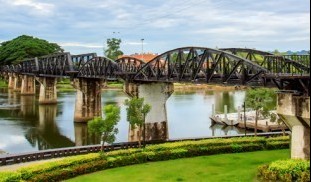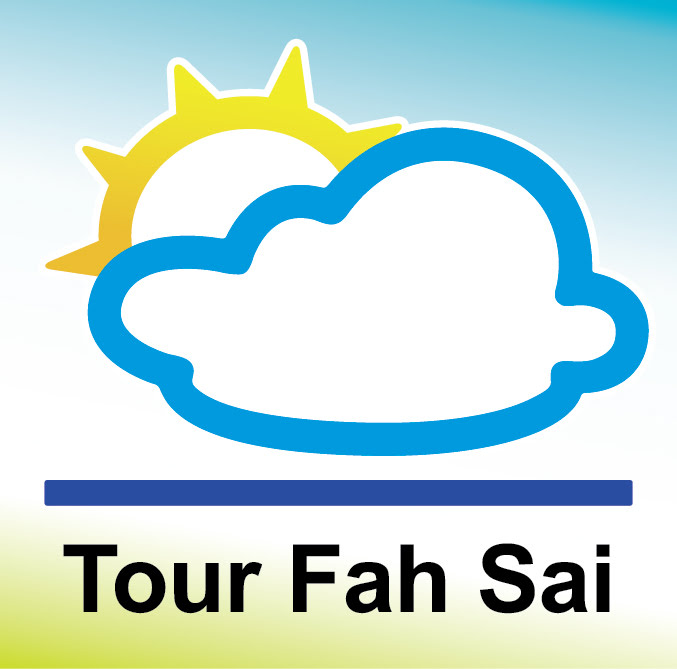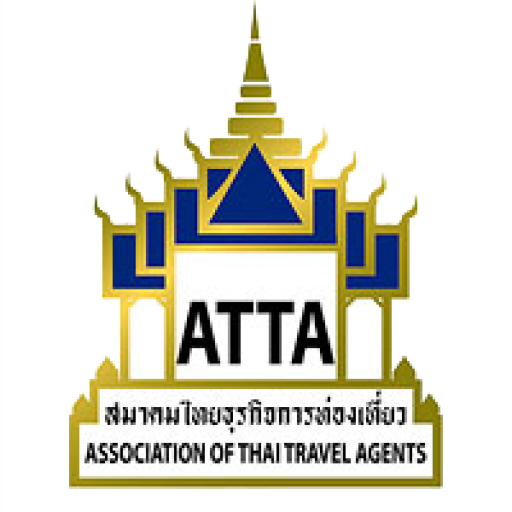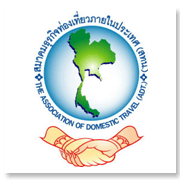11 Days / 10 Nights Bangkok-North-Phuket Price: XX,XXX THB
Day 01: Bangkok – Kanchanaburi (L)
Departure to visit the Train Market, locally known as Maeklong Railway Market. What makes the market special is that it occupies part of a train line. A few times a day, and before the train runs through the market, vendors lower their umbrellas and move some of their produce away from the train tracks and as soon as the train passes, the vendors move their goods back onto the tracks and continue as normal (until the next train arrives).
Next stop will be Damnoen Saduak floating market, the most popular floating market in Thailand. A trip to this Thai phenomenon is like traveling back to the ancient times of the Siam Kingdom, where colorful clad merchants paddle along the narrow canals. Take a boat to see the traditional way of selling and buying fruits, vegetables and other goods and admire traditional Thai houses and the way locals use boats in their everyday lives. Opportunity to buy and try some of the different kind of food that is being sold here.
Lunch will be served at a local restaurant.
Drive to Kanchanaburi and visit Jeath War Museum. The museum is divided in two sections, one representing the construction of the Death Railway and the other consisting of reconstructed bamboo huts containing items such as paintings, drawings, photos, weapons, tools, or maps among others.
Last visit will be the bridge over the River Kwai, constructed during the World War II by the Japanese using the forced labor of hundreds of thousands of civilians from southeast Asia and prisoners of war from the Allies’ forces.
Transfer to the hotel for overnight accommodations.
Day 02: KANCHANABURI – AYUTTHAYA – LOPBURI – SUKHOTHAI (B/L)
Breakfast at the hotel and drive to Sukhothai via Ayutthaya and Lopburi.
Stop in Ayutthaya, the former capital of Thailand for 417 years and one of Thailand's major touristic attractions. The Ayutthaya Historical Park was declared as a UNESCO World Heritage Site in 1991.
Visit Wat Mahathat, with its iconic Buddha head entwined in the roots of a tree, is one of Thailand’s most photographed sites. Built during the 14th century, the temple was an important venue for Royal ceremonies and later destroyed during the Burmese invasion in 1767, who also vandalized many Buddha images by cutting off their heads.
Walk to Wat Ratchaburana, built in 1424 by King Borommarachathirat II as a memorial to his two elder brothers.
Afterwards visit Wat Mongkhon Bophit, or the Buddha of the Holy and Supremely Auspicious Reverence, which was sculpted in 1538 in the reign of King Chairacha.
Last visit in Ayutthaya will be Wat Chaiwatthanaram, one of the most impressive ancient temples in Ayutthaya which was established in 1630 A.D. during the reign of King Prasatthong. It is formed by one main central tower surrounded by four smaller towers on the same level.
Buffet lunch will be provided at Krungsri River Hotel before heading to Lopburi.
Arrive in Lopburi city, one of the oldest cities in Thailand and often called 'Monkey City' due to it is filled with monkeys and where locals have learned to live in harmony with them. Visit Wat Prang Sam Yot and its three Khmer style towers adorned with decorations of mythological creatures and then continue to Sukhothai.
Arrive in Sukhothai and check-in at the hotel for overnight accommodations.
Day 03: SUKHOTHAI – LAMPANG – PHAYAO – CHIANG RAI (B/L)
Opportunity to give alms to monks. Wake up around 5 am and head to the temple before the sun is up. The guide will help to buy the food (donation can be money also). The amount of money to be spend is entirely up to each person but 100 or 130 baht should be enough (around 3€ or 4$).
Go back to the hotel for breakfast before visiting Sukhothai, the first capital of the kingdom in the 13th century and one of the most historically important sites in Southeast Asia. Sukhothai Historical Park was declared as a UNESCO World Heritage Site.
Sukhothai means ‘the dawn of happiness’ and the kingdom did enjoy an extended period of peace and prosperity until it was annexed by the Ayutthaya Kingdom.
Visit Wat Sra Sri, located on an island and accessible by footbridges. Wat Sra Sri is one of Sukhothai’s most popular and symbolic temples and it was used for important Buddhist ceremonies that took advantage of the purity symbolized by the water boundaries.
Next visit will be Wat Sri Chum and its immense image of Buddha partly visible from the outside. This Buddha figure is over 11 meters wide and almost 15 meters high and was built approximately 700 years ago.
On the way to Chinang Rai, a stop will be made in Lampang, a small typical town where appreciate the northern provinces architecture and its beautiful wooden houses along the river.
Take a horse-drawn carriage and visit a typical Lanna house, locally known as Ban Sao Nak. Built on stilts, not only reveals its characteristic architecture, but also many old-fashioned utensils and products. Explore the old city and its small streets and beautiful old houses by the river.
Afterwards visit Wat Phra Kaew Don Tao and its golden Chedi.
Lunch in a local restaurant before continuing the journey. Stop at Phayao to visit Kwan Phayao, the biggest freshwater Lake in Northern Thailand. Take a boat to coast out onto the waters to Wat Tilok Arum, temple located in the middle of the lake and drowned under the water. The only part that emerges from the water surface is the brick chedi.
Arrive in Chiang Rai and check-in at the hotel for overnight accommodations.
Day 04: CHIANG RAI – GOLDEN TRIANGLE – CHIANG MAI (B/L)
Breakfast at the hotel before visiting Chiang Rai’s main attractions.
First visit will be The Blue Temple, locally known as Wat Rong Suea Ten and the newest temple in Chiang Rai. Painted in an eye-catching blue with overlays of gold embellishments. The centerpiece inside the great hall is a huge statue of a White Buddha in sitting position surrounded by contemporary Buddhist art in a modern style.
Continue to Black House, locally known as Baan Dam. It is the unique creation of national artist, Thawan Duchanee. Part art studio, part museum, part home, Baan Dam is an eclectic mix of traditional northern Thai buildings interspersed with some outlandish modern designs.
Drive to Nang Lae to visitthe Long Neck Village, where the Karen tribe lives. The Karen is a tribal group worldwide recognized for their elongated necks, women wear heavy brass rings around their necks, forearms, and shins since they are very young, so they finally look the way they do today. While the Karen men are mainly field workers and farmers, the women have a rich history of crafting from woodcarving to weaving. Time to explore the village and buy some souvenirs.
Next stop will be the Golden Triangle, where the Mekong River joins the Ruak River and form the famous “triangle” with the borders of Thailand, Myanmar and Laos. Visit also the Opium Museum.
Lunch will be served in a local restaurant.
On the way to Chiang Mai, a stop will be made to visit Wat Rong Khun, also known as the white temple, a lifetime project of the artist Chalermchai Kositpipat. The temple has a fine blend of traditional Buddhist art with contemporary themes and is decorated with small pieces of mirrored glass which add substantially to its dramatic beauty.
Arrive in Chiang Mai and check-in at the hotel for overnight accommodations.
Day 05: Chiang Mai (B/L)
Breakfast at the hotel before start exploring Chiang Mai. Chiang Mai is home to numerous temples built in Lanna style with Shan and Burmese influences. Despite the development of the city, Chiang Mai retains the feeling of being a provincial town, with 300 temples and numerous narrow streets.
Visit Warorot market, the largest local market and where exotic fresh fruits, preserved food, local delicacies, clothes galore, flowers and many other things are sold here at reasonable prices.
Afterwards visit Wat Pra Singh, first built during the reign of Phra Chao Kham Fu (1328-1335). The temple’s compound includes the Lai Kam Chapel.
Continue to Wat Chedi Luang, a huge pagoda built by King Saen Muang Ma in 1401. It originally was 90 meters high but as a result of an earthquake in 1545 it is only 40 meters high now.
After lunch, drive to visit Wat Phra That Doi Suthep, the most sacred temple of Chiang Mai and an especially important pilgrimage spot for many Thai people. The temple is located at the end of a serpentine road on Suthep Mountain, at 1,100 meters above the sea level with sweeping views of the city below. It houses a wealth of Buddha images, murals and Buddhist arts. Climb the 306 stepped Naga staircase to reach the temple.
Last visit will be Doi Pui village, where the White Meo Hilltribe lives. Time to explore the picturesque village before heading back to the hotel.
Day 06: Chiang Mai (B/L)
Breakfast in the hotel and free time till the afternoon.
Lunch in a local restaurant before the visit to Pha Chor, which is part of Mae Wang National Park. The main attraction is Pha Chor Canyon, created after Ping River changed its course many years ago. First the shift created a hill and after time passed, the hill eroded and changed into cliffs and soil pillars. Today those pillars are 30 meters high and one of the main attractions of Mae Wang National Park. Time to walk and explore around.
Back to Chiang Mai for overnight accommodations.
Optional Visits: (Will be done before Pha Chor)
Kanta Elephant Sanctuary
Transfer to Kanta Elephant Sanctuary through a beautiful countryside, forest, and local farming areas.
Visit starts learning about the story of the elephants that live here before changing into traditional clothing.
After, prepare some fruits for the elephants and feed, interact, and play with them in their natural environment and learn about their behavior and history.
Afterwards walk with the elephants to a clean water pond where you will have the chance to observe them while they cool off themselves.
Have some tea, coffee and season fruits before transfer back to Chiang Mai for lunch in a local restaurant and visit to Pha Chor.
* English speaking guide and join transfer. Extra cost for Spanish speaking guide (subject to availability).
Mae Tang Elephant Park
Transfer to Mae Teng Elephant Park through a beautiful countryside, forest, and local farming areas.
Witness the elephant show in which these animals will demonstrate their multiple skills. Possibility of riding the elephants (price is not included).
Transfer back to Chiang Mai for lunch in a local restaurant and visit to Pha Chor.
Day 07: CHIANG MAI – PHUKET (B)
After breakfast, transfer to Chiang Mai airport to Phuket.
Then, arrive in Phuket and transfer to the hotel for check-in and overnight accommodation.
Day 08: Phuket – City tour Phuket (B)
Breakfast at the hotel before visiting Phuket’s main attractions.
First visit will be Wat Chalong, or Chalong Temple, built at the beginning on 19th century, Its real name is Wat Chaiyathararam which is the largest of Phuket's temples. Locals and many Thai tourists come to pray and pay respects to several revered monks who were the founders of Wat Chalong, Among them Luang Pho Cham and Luang Pho Chuang. Wat Chalong Chedi is built on three floors so feel free to climb all the way to the top floor terrace to get a nice bird view on the entire temple grounds. Few more steps will lead you to a glass display where the fragment of bone can be contemplated.
And the last visit is Phra Phuttha Ming Mongkhon Aknakkhiri or the Big Buddha, known to foreigners as the Big Buddha, is a large white Buddha image enshrined on the top of Khao Nak Kerd. High mountains on the Khao Nak Kerd National Reserved Forest It is a new religious tourist attraction in Phuket that looks like a Buddhist Park. It is shady and beautiful and also both places are for meditation and relaxation. Both Thai and foreign tourists like to come to visit, see the scenery and pay homage to the prosperity when visiting Phuket.
Day 09 : Phuket
3 Options
1. Optional Visits – Surin Island by speedboat (B/L/D)
Breakfast at the hotel and private boat transfer to Surin Island.
Depart to Surin Island (Best for snorkeling site of Andaman by speed boat) at Chong Kad Channel then visit Moken village where the sea gypsy residing in north Andaman sea.
Buffet lunch served in the national park restaurant.
Then, 2nd Snorkeling at Bon Bay or Mae Yai Bay and 3rd Snorkeling at Pineapple Bay or Turtle Bay to enjoy the beauty of coral and fishes. Back to pier and hotel
2. Optional Visits – Similan Island by speedboat (B/L/D)
Breakfast at the hotel and start exploring a Similan Program.
Depart to Similan Islands, first snorkeling and appreciating underwater world, viewing beautiful fishes and colorful corals at Island No. 5 and No. 6.
Lunch box set at Island No. 4 (Koh Miang), andrelaxing at bay with your own leisure on the beach.
Then, take you to Island No. 9 (Koh Ba Ngu) for snorkeling at Christmas Point or Namchai bay, The highlight area where there are attractive coral reefs and a variety of colorful fishes.
The last visit is Similan Island at Island No. 8 (Koh Similan) where you can relax, swimming take pictures or climbing up to a view point on the top of a Sailing rock, back to pier and hotel.
3. Optional Visits – Phi Phi -Bamboo Island by speedboat (B/L/D)
Breakfast at the hotel and start exploring a Program: Phi Phi – Bamboo Island
The first stop will be Bamboo Island, One of the most beautiful spot in Andaman Sea, White samds and turquoise waters blend seamlessly for a marvelous view. Enjoy your time for swimming snorkeling, sun bath or walking around a beautiful area.
Lunch at Phi Phi Don Island (Ton Sai Bay) and free time on the beach
Take you for relaing and swimming in emerald lagoon at Pileh Lagoon. Go to Monkey Beach then sightseeing outside at Viking cave.
The last visit will be Maya Bay where the movie “The Beach” was filmed, then back to pier and hotel.
Day 10 : Free time (B)
Day 11 : Phuket – Next Destination (B)
After breakfast, transfer to Phuket airport for the flight to the next destination.












